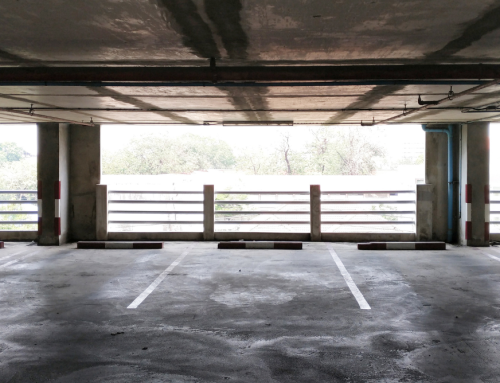What’s the difference between reactive and planned grounds maintenance?
Grounds maintenance is all about keeping outdoor spaces looking good and functioning well. In the UK, where our parks, gardens, and green spaces are vital for community life, effective maintenance is essential. This article explores the two main approaches to grounds maintenance: reactive and planned. Let’s break down what each one means and how they work.
Section 1: Reactive Grounds Maintenance
What Is Reactive Grounds Maintenance?
Reactive grounds maintenance is all about fixing things as problems arise. If something goes wrong—like a fallen tree or a broken path—maintenance teams jump into action to resolve the issue.
Key Features of Reactive Grounds Maintenance
Unpredictability
One of the main traits of reactive maintenance is that it can be unpredictable. Since it deals with unexpected events, you never quite know when a maintenance issue will pop up. And it’s hard to plan or budget for these occurrences.
Immediate Response
This approach requires a quick response. When something needs fixing, the team acts fast to make sure the area is safe and usable again.
Advantages of Reactive Maintenance
Cost-Effectiveness
In the short run, reactive maintenance can seem cheaper. You only spend money when something breaks, which can save cash on regular upkeep, however, it’s not always the best value for money and some issues can be prevented entirely with planned upkeep.
Flexibility
Reactive maintenance is flexible. Teams can prioritize urgent issues, which is great in situations where conditions are always changing.
Disadvantages of Reactive Maintenance
Increased Downtime
However, waiting to fix problems can lead to increased downtime. Issues can linger longer than necessary, making areas less enjoyable for everyone.
Potential for Larger Issues
Additionally, only addressing problems as they arise can let minor issues grow into bigger, more costly repairs down the line.
Examples of Reactive Maintenance
There are plenty of cases where reactive maintenance has fallen short. For example, after a heavy storm, one UK council faced criticism because it took too long to clear fallen trees in local parks.
Section 2: Planned Grounds Maintenance
What Is Planned Grounds Maintenance?
On the other hand, planned grounds maintenance involves a more organised approach. This method schedules regular maintenance tasks, ensuring everything is taken care of before problems arise.
Key Features of Planned Maintenance
Scheduled Intervals
Planned maintenance is all about timing. Regular tasks—like mowing lawns, trimming bushes, and planting flowers—are done on a set schedule, and in accordance to seasonal best practices.
Predictive Analysis
This approach also uses predictive analysis. By looking at data and trends, teams can anticipate maintenance needs and take action before issues develop.
Advantages of Planned Maintenance
Long-Term Cost Savings
While planned maintenance might cost more upfront, it usually saves money in the long run. By spotting and preventing major problems, you avoid expensive repairs down the line.
Improved Aesthetics and Health
Regular maintenance keeps outdoor spaces looking beautiful and healthy. Well-kept areas are more inviting and support local wildlife, which is a win for everyone.
Disadvantages of Planned Maintenance
Higher Initial Costs
However, the initial investment in planned maintenance can be daunting. Setting up a thorough maintenance schedule requires planning and resources, which may stretch budgets.
Resource Allocation Challenges
It also requires careful planning to ensure that the right people and equipment are available when scheduled tasks need to be done.
Examples of Planned Maintenance
A great example of effective planned maintenance is found in the Royal Parks of London. Their structured approach has helped preserve these historic spaces and keep them welcoming for visitors.
Section 3: Comparing the Two Approaches
Cost Comparison
When comparing costs, planned maintenance might seem pricey at first but often leads to savings in the long run. Reactive maintenance can appear cheaper initially but can end up costing more due to unplanned repairs.
Effectiveness in Different Scenarios
The effectiveness of each method can depend on the context. Urban areas, for example, often benefit more from planned maintenance, while rural spaces might need a more reactive approach due to changing conditions.
Environmental Impact
In terms of environmental impact, planned maintenance generally promotes sustainability. Regular care leads to healthier ecosystems, while reactive measures can sometimes cause harm.
Resource Management
Managing resources is crucial for both methods. Planned maintenance allows for better allocation, while reactive maintenance can lead to scrambling for resources during emergencies.
Stakeholder Satisfaction
Generally, people are happier with well-maintained spaces. Communities often prefer areas that receive regular upkeep, leading to greater public use and enjoyment.
Section 4: Best Practices
Combining Both Approaches
The best strategy may be a mix of both reactive and planned maintenance. This allows for quick responses to immediate needs while ensuring that long-term upkeep is also prioritised.
Recommendations for Grounds Maintenance in the Manchester
Both reactive and planned grounds maintenance have their strengths and weaknesses. While reactive maintenance offers quick fixes, it can lead to higher costs and longer downtimes. Planned maintenance, although initially more expensive, promotes long-term health and beauty for outdoor spaces. By finding a balance between these two approaches, we can ensure that Manchester’s green spaces remain enjoyable and well-kept for all. Looking ahead, the focus will likely be on sustainability and community engagement, shaping the future of how we care for our outdoor environments.
To improve grounds maintenance across Greater Manchester, consider hiring a contractor who specialises in keeping green spaces in tip-top condition – like Proscape Landscapes! Get in touch for a free quote today.







